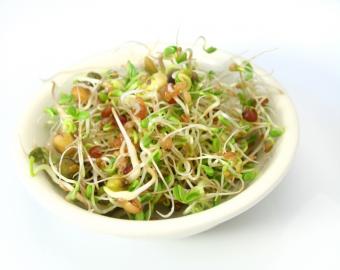A Gluten-Free Alternative

What is Millet?

A Long History

Roti

Millet Porridge

Millet Sprouts

Health Benefits

Learning More About Millet

© 2025 LoveToKnow Media. All rights reserved.

What is millet used for, and is it a good gluten free choice? If you are exploring new gluten free options, you have probably encountered millet at your local health food store or in the pages of a gluten free cookbook. Learning more about this versatile and under-utilized grain can open the door to new possibilities in gluten free cooking.

Millet is a tall annual grass with tiny, bead-like seeds. There are several varieties of millet, grouped together by appearance and utility rather than scientific classification. All types of millet are gluten free, so whether you choose pearl, proso, foxtail or finger millet can be based entirely on personal preference.

Cultivated in Africa and Asia beginning some 7000 years ago, millet is one of the oldest human foods and possibly the first cultivated grain crop. There is evidence that the crop was a food source of Stone Age people near modern day Switzerland, and was a staple crop among the Romans, the Ancient Greeks and the Huns.

Millet is popularly used in Indian food to make an unleavened flatbread known as roti.
To make your own roti, mix millet flour with enough boiling water to make a soft dough. Once the dough is cool enough to handle, divide your dough into balls and shape, using waxed paper and oiled hands to ease handling. Each roti should be roughly the size and shape of a small pita.
Cook on a preheated griddle or place under your oven's broiler, turning midway through cooking, until both sides are golden and crispy.

Millet can make an easy and wholesome porridge as well. Mix one part whole millet to four parts water, or substitute milk, soymilk or broth for part of the water.
Simmer gently, as for oats or other porridge, until your millet porridge reaches desired consistency. Add cream and brown sugar. To make a healthful, savory dish, stir in roasted garlic and mashed sweet potato and top with nutritional yeast.

Sprouting is a popular way of adding nutrition and convenience to your favorite grain. Soak hulled millet overnight in a glass jar. In the morning, place a piece of plastic screen or cheesecloth over the mouth of the jar and strain out the water. Lay the jar on its side to keep seeds from drying out or smothering. Rinse the seeds with fresh water twice daily and wait for nature to work its magic.
Use millet sprouts in salads, stir fries, or as a quick and nutritious snack on their own.

Millet is a great source of phosphorus and magnesium, two minerals that have been shown to reduce the risk of heart disease, diabetes and high blood pressure. This ancient grain is also a good source of vitamin B3, or niacin, which may help lower elevated cholesterol.

For more recipes and information to answer the question, "What is millet?" check out any of the many wheat free books that have recently become available. The more you learn about all the delicious gluten free grains the world has to offer, the easier a wheat-free lifestyle will become.